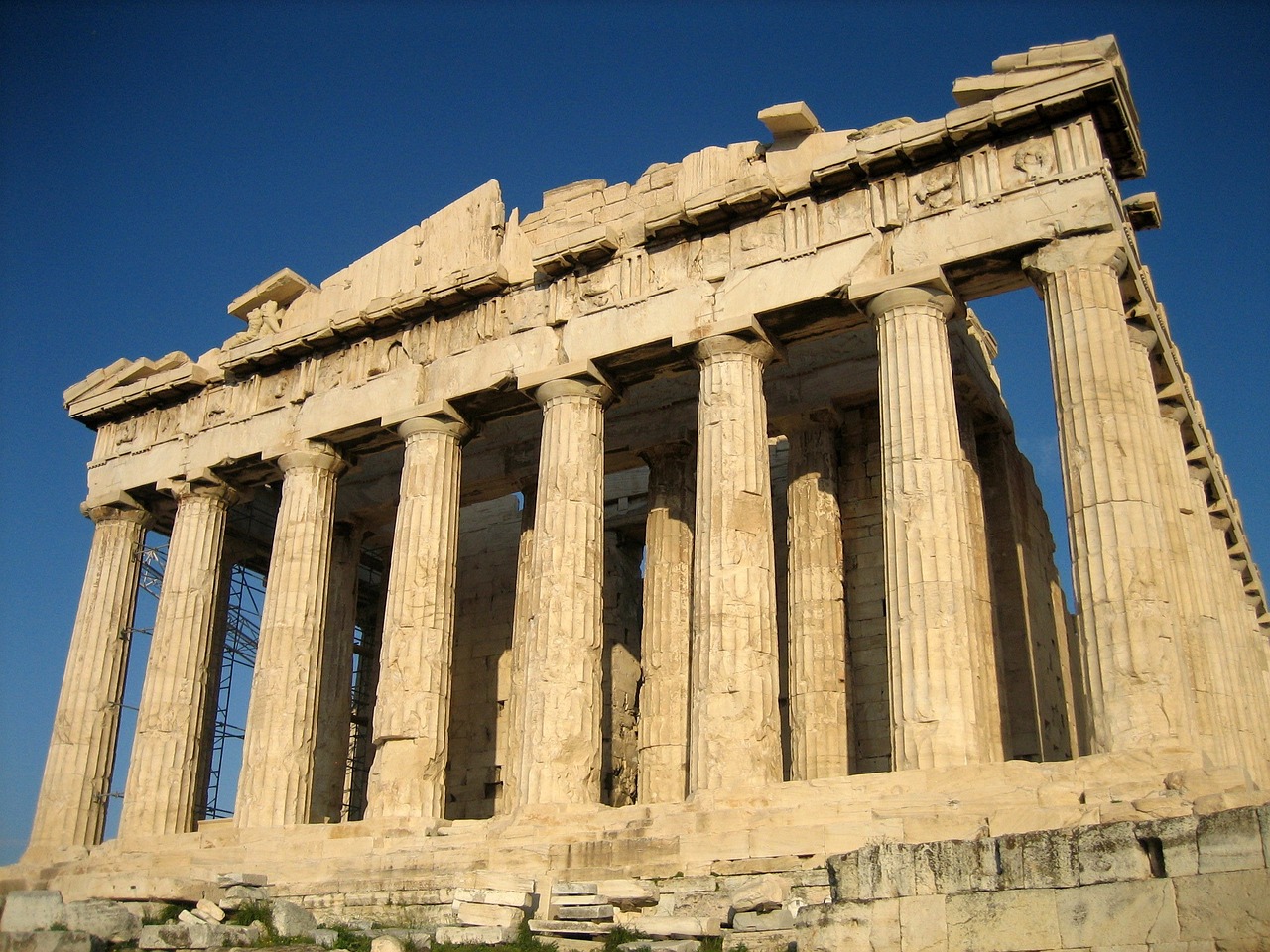The Belle Epoque

Photo by Lucas Albuquerque on Unsplash
The belle epoque (La Belle Époque), "Beautiful Age," is a period of French history dated between 1871 and the outbreak of World War I in 1914.
The movement centered around Paris and branched off across Europe, western Russia and America.
The belle epoque era brought France stability after the defeat in the Franco-Prussian War (1871), the uprising of the Paris Commune (1871), and the defeat of General Georges Ernest Boulanger at the elections of September 1889 which severely undermined the political strength of the conservative and royalist elements of French political life.
Across the European continent, the period ushered in a European "Golden Age."
Historian, R. R. Palmer said: "European civilization achieved its greatest power in global politics, and also exerted its maximum influence upon peoples outside Europe."
Economic prosperity, colonial expansion, and technological, scientific, and cultural advances thrived throughout France and the rest of Europe in the belle epoque era.
Modern Olympic Games
Charles Pierre de Frédy, Baron de Coubertin (1 January 1863 – 2 September 1937) was a French educator and historian, who wanted to revive the ancient Greek Olympic Games.
He founded the International Olympic Committee (IOC) in 1894 and the first modern Olympic Games were held in Athens on April 6–15, 1896.
Paris hosted the second Olympic Games in 1900 and after a brief hiatus due to World War I, the modern Olympics resumed in 1924 with Paris hosting once again.
Re-building of Paris in the belle epoque era
Napoleon III appointed Georges-Eugène Haussmann, a city prefect, to oversee the beautifying of Paris from 1853 to 1870.
Georges-Eugène Haussmann was instructed to bring air and light to the center of the city, connect the neighborhoods with boulevards, and to make the fast growing city more beautiful.
It was the biggest transformation in the history of Paris causing a huge social and civic upheaval because it began with the destruction of many of the city's streets and thousands of its houses.
Paris was transformed from the congested city of the 18th century into a modern, beautiful city with new sewer systems, neighborhoods with green spaces and uniform, five-story apartment buildings.
The architecture of Paris created during the belle epoque was notable for its variety of different styles, from neo-Byzantine and neo-Gothic to classicism, Art Nouveau and Art Deco.
A central, fresh food market (Les Halles) was constructed as well as parks, schools and hospitals.
The Boulevards became an important part of the urban landscape of Paris to be enjoyed with leisurely walks by the people.
Paris became known as the “City of Light” during the belle epoque in part, because it was the first to install gas lanterns to light the streets at night.
Space was also cleared for the Palais Garnier, home of the Opéra National de Paris, and Les Halles marketplace, and linked the new train terminals with the long, wide and straight avenues.
During the belle epoque environment, Parisian cultural, architectural and artistic excellence flourished.
Three "universal expositions" in 1878, 1889, and 1900 brought millions of visitors to Paris to see the latest innovations in commerce, art, science and technology.
Paris saw the construction of the Eiffel Tower, the Dazzling domes of Grands Magasins (department stores), the Paris Métro, the Palais Garnier opera house, the Basilica of Sacré-Cœur Basilica on Montmartre, located at the highest point in the city breathed new life into the heart of Paris. and changed the skyline,
Parisian iconic cafes were the meeting places for the literary, artistic and intellectual élite at places like the Les Deux Magots, Cafè de Flore, Le Dome Cafè, Le Deauville, Closerie des Lilas Le Select and La Rotonde.
Impressionist, Cubist, and Fauvist artists revolutionized painting during the belle epoque era of artistic freedom.
Claude Monet, Pierre-Auguste Renoir, Edgar Degas, and Camille Pissarro are just some of the famous painters of the Belle Epoch era.
French imperialism was also re-building a new empire after 1850 in Africa as well as Indochina and the South Pacific where the French language and Catholic religion spread.
Solopreneurship: Best Work from Home Solution at Any Age
Click on the Link Below
CRISIS-PROOF YOUR INCOME
Click on the Link Below

1889 World's Fair
The 1889 World's Fair from May to November in France was symbolically important because it marked the Storming of the Bastille on the hundredth anniversary of the French Revolution.
The 324-meter (1,063 ft), wrought iron latticed, Eiffel Tower, named after the engineer Gustave Eiffel whose company designed and built the tower was the central attraction of the 1889 World's Fair on the Champ de Mars in Paris.
The Exposition attracted 61,722 official exhibitors, of whom twenty-five thousand were from outside of France showcasing the technological, industrial, and cultural achievements of European nations.
Paris thrived as the center for the middle class and wealthy from around Europe with new forms of entertainment during the belle epoque.
It became known as Tout-Paris ("all of Paris", or "everyone in Paris").
For the less affluent, entertainment was provided by cabarets, bistros and music halls.
The 1889 World's Fair was a huge success with 32,250,297 people visiting the World Fair and 1,953,122 went to see the Eiffel Tower.
Moulin Rouge
The Moulin Rouge got its name from the red windmill that was inaugurated in 1889, the same year as the Eiffel Tower.
Built at the foot of Montmartre Hill above the Jardin de Paris, the iconic red windmill highlighted the history of Montmartre, a small village that once had many windmills that were used to grind wheat, press grapes and materials for factories.
The Moulin Rouge dazzled the people as the first electric building designed by Adolphe Léon Willette who visualized a brightly-lit facade would become an icon of Paris.
Its Champagne-filled parties pioneered the Moulin Rouge cabaret and Folies Bergère (music hall and variety-entertainment theater).
Dancers and singers such as Polaire, Mistinguett, Paulus, Eugénie Fougère, La Goulue and Jane Avril became celebrities.
The Can-can was a popular 19th-century cabaret style dance that appeared in Toulouse-Lautrec's posters from the era.
Throughout the years, the Moulin Rouge has also had its fair share of scandals.
One such scandal occurred on the 26th of October, 1890 when the Prince of Wales, the future Edward VII, booked a table to marvel at the famous dance troupe.
La Goulue (stage name of dancer Louise Weber), with her leg poised in the air recognized Edward and yelled: “Hey, Wales, the Champagne’s on you!”
Maxim's Paris
Maxim's, a restaurant in Paris, located at No. 3 rue Royale in the 8th arrondissement, achieved a new splendor for the rich in the belle epoque era.
Founded as a bistro in 1893 by Maxime Gaillard, formerly a waiter, at 3 Rue Royale in Paris, in 1899, it was given the decor it became known for, in preparation for the 1900 Paris Exposition.
At the end of the 19th century, Maxim's "became the social and culinary center of Paris."
By the mid 20th century Maxim's was regarded as the most famous restaurant in the world.
High Fashion During the Belle Epoqe Era
With the relaxing attitudes regarding women's independence, France became the center of fashion in the Belle Époque era, with cash-rich young women anxious to follow the latest trends created by the popular fashion houses.
By 1900, haute couture (high fashion and custom-made garments) houses in Paris included Jacques Doucet, Jeanne Paquin, Paul Poiret, Georges Doeuillet, Margaine-Lacroix, Redfern, Raudnitz, Rouff, Callot Sœurs, Blanche Lebouvier as well as the sons of English designer, Charles Worth.
These fashion houses were concentrated around the Rue de la Paix, the Place Vendôme and the nearby Grands Boulevards.
Jacques Doucet
Jacques Doucet (1853–1929), a French designer and art collector was born into a prosperous Parisian family whose lingerie and linens business, Doucet Lingerie, had flourished in the fashionable shopping street of Rue de la Paix, in the center of Paris since 1816.
Jacques Doucet continued the family business tradition by opening up his ladies’ apparel salon in 1871.
Uniting art with fashion in his occupation as art collector and designer, he became famous for his elegant dresses, made with flimsy, semi-transparent materials in superimposing pastel colors which expressed the ethos of the Belle Epoch, opulent era.
From that period, fashion began to move in a yearly cycle in Paris and by 1912, the fashion magazine, La Gazette du Bon Ton illustrated Jacques Doucet fashions of the day including Louise Chéruit, Georges Doeuillet, Jeanne Paquin, Paul Poiret, Redfern & Sons, and the House of Charles Worth.
Doucet's most original designs which consisted of frills, sinuous curving lines and lace ruffles the colors of faded flowers were created for actresses such as Cécile Sorel, Rejane and Sarah Bernhardt (for whom he designed her famous white costume in L'Aiglon).
These famous actresses of the belle epoque often wore their outfits, both on and off the stage.
House of Lucile
Lucy Christiana, Lady Duff-Gordon (née Sutherland; 13 June 1863 – 20 April 1935) was a leading British fashion designer in the late 19th and early 20th centuries who worked under the professional name Lucile.
Her House of Lucile, opened in 1891 serving the trend-setting clientele of royalty, aristocracy and stage and film personalities.
Lady Duff-Gordon was the first British-based designer to achieve international acclaim, with salons opening in New York City in 1910, Paris in 1911, and Chicago in 1915.
She originated the "mannequin parade," trained the first professional models and launched the slit skirts, low necklines and the less restrictive corsets and lingerie.
Lady Duff-Gordon is also remembered as a survivor of the sinking of the RMS Titanic in 1912 when it hit an iceberg.
House of Worth
At the beginning of the belle epoque, the industry of haute couture (high fashion) was dominated by the House of Worth founded by English designer, Charles Frederick Worth in 1858 in partnership with Otto Bobergh.
Their fashion house was located in the fashionable shopping street in the center of Paris at 7 Rue de la Paix.
Worth is considered by many fashion historians to be the father of haute couture.
It was at Gagelin's in Paris in the 1850s that his designs won praise at Universal Expositions in London and Paris.
Gagelin supplied the trousseau (clothes, linen and other belongings for a bride) for the newly married Empress Eugénie. After Worth opened his own house, the Empress appointed him court designer which increased his reputation and business success.
Apart from Empress Eugénie, he had numerous other royal clients, including Empress Elisabeth of Austria.
Wealthy American and socially ambitious European women, traveled to Paris to have their entire wardrobes made by Worth
Worth loved working with American clients because, as he put it, American women: "have faith, figures, and francs - faith to believe in me, figures that I can put into shape, francs to pay my bills".
Build a Profitable Online Business
Click on the Link Below

Science and technology
Scientists in Paris played a leading role in many of major scientific developments of the belle epoque period, particularly in bacteriology and physics.
Louis Pasteur (1822-1895) was a pioneer in pasteurization, the rabies, cholera, anthrax vaccines and the Pasteur- Chamberland filter (bacterial water filter).
He also founded the Pasteur Institute in 1888 to carry on his work.
The physicist Henri Becquerel (1852-1908), discovered spontaneous radioactivity in 1896.
In 1903, he was awarded the Nobel Prize in physics for his discovery.
Pierre Curie (1859-1906) and Marie Curie (1867-1934) jointly carried on Becquerel's work, discovered the radioactive element radium (in the form of radium chloride) and polonium in 1898.
They jointly received the Nobel Prize for physics in 1903.
Marie Curie became the first female professor at the University of Paris and won the Nobel Prize for chemistry in 1911.
Marie was the first woman scientist of international distinction.
She was the first woman to be buried in the Panthéon (a mausoleum for the remains of distinguished French citizens) in Paris.
Edouard Michelin invented removable pneumatic tires for bicycles and automobiles in the 1890s.
The scooter and moped are also Belle Époque inventions.
Paris also hosted the first neon lights in Paris on 3 December 1910 in the Grand Palais, thanks to a French chemist, Georges Claude, and engineer who became known as the “Edison of Paris.”:
And the first outdoor neon advertising sign was put up on Boulevard Montmartre in 1912.
End of an Era
Just as military conflict sparked Paris' Golden Age, during the belle epoque era, it also extinguished it with the onset of World War I.
It was during the war that the belle epoque received its romantic name.
Though the era has long since ended, its presence can still be seen and felt throughout the City of Lights.
Ezine Articles Author Link
Click on the Link Below

Everything You Need To Build An Online Business! - SBI!
Solo Build It! Home Page
Click on the Link Below

Newsletter Opt-in-Form
The Keen Traveler
Recent Articles
-
The Power of Money
Mar 23, 25 03:53 AM
The power of money provides financial security, enables one to fulfill financial needs, improves the quality of life and gives peace of mind during unexpected financial emergencies. -
Simplicity tranquility and enlightenment
Mar 16, 25 06:01 AM
Simplicity tranquility and enlightenment empowers the individual to live lighter and to add value to life through meaningful goals. -
Faith History and Culture
Jan 02, 25 12:48 AM
Faith history and culture have impacted human history in all places and times.


